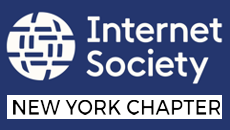New Tech City report – NYC Internet sucks! #nyc #broadband
 The Center for The Urban Future has issued a report – New Tech City – that details NYC’s rapid growth to tech industry pre-eminence in the last few years. However, the report states that that development is hampered by the poor state of Internet infrastructure in the city, citing the lack of availability, bandwidth, and competition.
The Center for The Urban Future has issued a report – New Tech City – that details NYC’s rapid growth to tech industry pre-eminence in the last few years. However, the report states that that development is hampered by the poor state of Internet infrastructure in the city, citing the lack of availability, bandwidth, and competition.
Here’s the relevant passage, in full.
Bandwidth
It’s not difficult to grasp why a strong, reliable broadband infrastructure is absolutely essential for tech companies built around the Internet and mobile technologies. What is surprising is that New York – the world’s media capital – could be behind the curve in having the bandwidth that the city’s tech companies need. Unfortunately, that appears to be the case. Over the course of our interviews for this study, the state of broadband connectivity in the city came up as the second most frequently cited threat to New York’s future growth in the tech sector.
To be sure, we didn’t hear of a single tech company in New York that doesn’t have a broadband connection. And whereas virtually everyone we interviewed noted the challenge in finding talented engineers, bandwidth was cited as a problem by less than half of those we interviewed. However, it came up again and again. “It’s like the elephant in the room is that bandwidth here sucks,” says David Pakman. “You should be able to walk into any building and have at least 150 megabit connection available to you. There has to be ways for the city to construct much better bandwidth availability for start-ups.”
A number of those we interviewed for this report told us that their Internet connection goes down on a relatively consistent basis. Some said that the problem is a lack of redundancy, since only one telecom provider offers high-speed service where they are located. Still others say that they had to abandon plans to relocate to former industrial districts outside of Manhattan that happen to offer inexpensive rents, solely because there is no broadband infrastructure in buildings there.
“Bandwidth is one of the big, big constraints out there,” says John Borthwick of Betaworks. “It’s really crappy and there is uneven accessibility to bandwidth. I know a lot of our companies complain about this. Even here [at Betworks’ office in the Meatpacking district], we have FIOS in the building, which is good. But we don’t have a backup to it. Time Warner Cable doesn’t pass the building, so there’s no backup. And so if FIOS goes down, which is conceivable for a day, we’re screwed. Hopefully it won’t happen, but there should be redundancy to bandwidth.” Chris Dixon, the co-founder of start-up Hunch, the recommendation engine which was purchased by eBay in November 2011, recently blogged about the problems getting broadband at his company’s office, which is centrally located on 21st Street in the Flatiron district. “Amazingly, one of our biggest challenges being a NYC start-up has been getting reliable Internet access” Dixon wrote in December 2011. “It’s embarrassing how bad Internet access in Manhattan is.” [Chris Dixon, “Getting Broadband in Manhattan,” December 2, 2011.]
While a number of tech companies have a problem with spotty Internet service, another issue is that there are some commercial districts outside of Manhattan where it is still difficult to get a broadband connection, period. This problem is by no means widespread citywide. The gaps are mainly limited to a handful of former industrial neighborhoods – including several along the Brooklyn and Queens waterfront – where the telecommunications infrastructure is roughly 100 years old. Because they were mainly filled with manufacturers who generally weren’t online, telecom carriers like Verizon never saw enough demand to justify the huge upfront cost of building out fiber optic lines to these commercial buildings. And since these districts had few residential customers, the economics never made sense for cable television companies like Time Warner and Cablevision to develop the infrastructure to serve these areas. The Center for an Urban Future’s 2004 report, “New York’s Broadband Gap,” detailed many of these problems.[Jonathan Bowles and Tara Colton, “New York’s Broadband Gap,” Center for an Urban Future, December 2004.]
The problem is that many of these older industrial districts are now appealing neighborhoods for tech start-ups – not to mention graphic design firms, fashion companies and other businesses and artisans – because they tend to offer much more affordable rents than in Manhattan office districts and, in many cases, are in close proximity to areas where many techies live today. But without a fast Internet connection, buildings in these districts become a nonstarter for tech companies. “There is a company I know of that is one of the most exciting new start-ups in NYC,” venture capitalist Fred Wilson blogged recently. “They are locating their new office in the emerging area in Brooklyn between DUMBO, Fort Greene, and the Brooklyn Navy Yard. This is a cool new neighborhood that could be home to a lot of start-ups looking for great workspaces at low rents. But there is no commercial grade Internet service in this neighborhood. Time Warner Cable wants this young start-up to guarantee them $80,000 in revenues so they can afford to dig up the street and lay the cables. That is nuts. We need to wire up this city from Staten Island to the Bronx, from Harlem to Rockaway Beach.” [Fred Wilson, “Talent and Bandwidth,” AVC, January 6, 2011.]

Reply